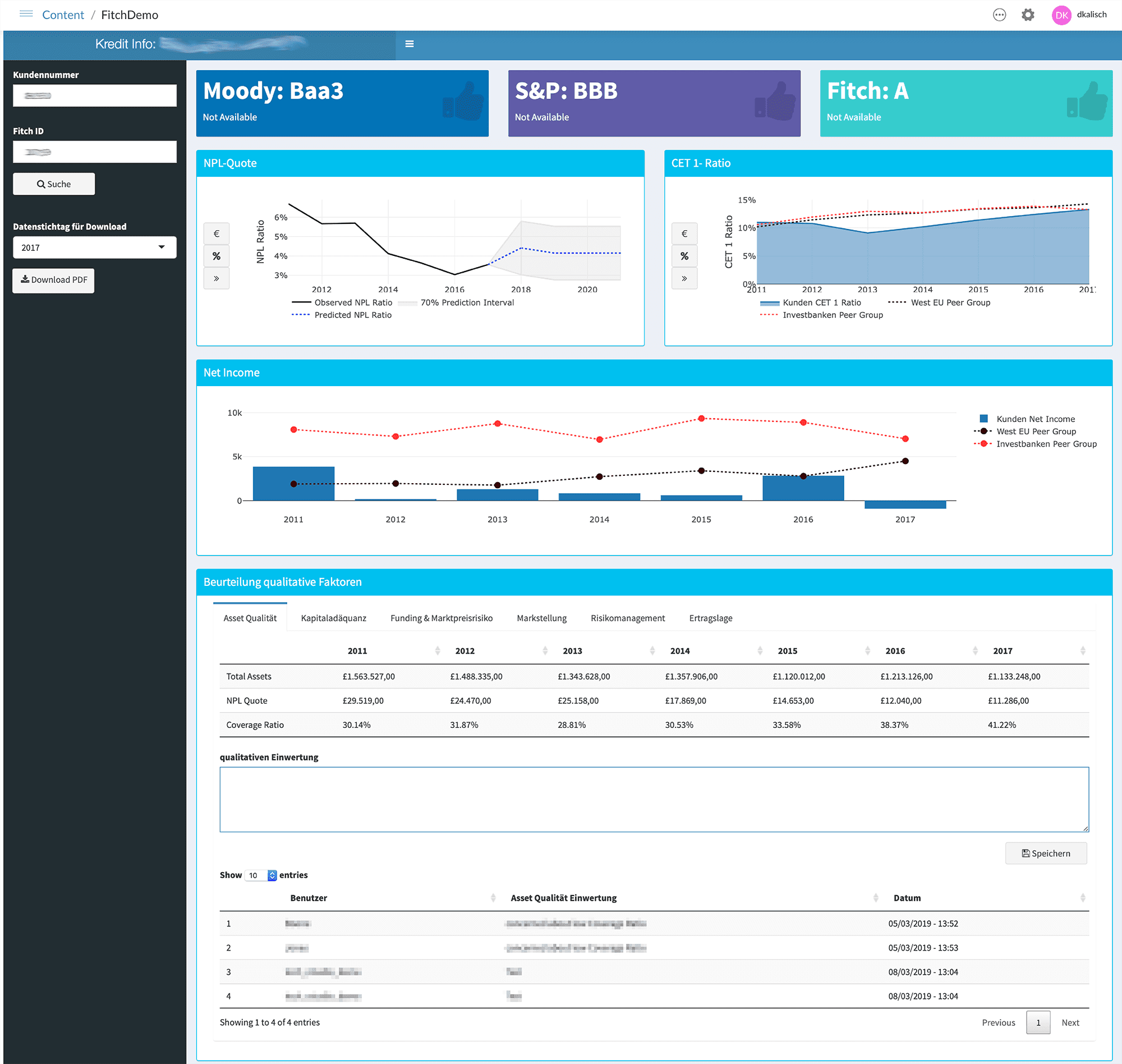Gathering and analyzing data is the key that unlocks the mysteries of the questions every team faces.
Where can we improve? What’s working? What’s not? The data itself serves as a light in the dark revealing insights into how an organization actually operates day-to-day. This enables a shift from being reactive to proactive.
Challenge
Time-consuming and manual effort to complete credit risk analysis and loan applications impacting the efficiency of lending activities and proficiency in NPL and CET-1 ratio forecasts.
Solution
A loan application evaluation was created for the “Financial Services” department, which obtains rating and balance sheet information from various providers via APIs. The process automatically evaluates and calculates specific loan risk, and provides a forecast for the future development of the NPL and CET-1 ratios, as well as other risk-relevant evaluations.
The application stores the qualitative scores of the credit analysts in a database as history and generates an automatic credit template from the calculations and scoring. The application can be connected to the bank’s process management system via the API interface.
Data Science Application
For the dashboard, an API interface was developed and the data was analyzed using descriptive statistical models in R. The forecast is based on an ARIMA time series model implemented in R. The application was developed within 6 weeks, with 2 additional employees, and is based on the RStudio Connect Server environment.
Outcome
The application reduces the time to create a credit rating by about 70%, the effort for loan template preparation by about 60% increasing loan processing efficiency and effectiveness while also improving corresponding NLP and CET-1 ratio forecasting and calculation efficiencies.
The quantitative forecast can reduce the error rate of the qualitative evaluation.
In addition, it is no longer necessary to have credit analysts analyze a regular resubmission, beyond significant data basis occurrences. By increasing the frequency of the survey dates (from annually to quarterly), an early warning system can detect NPL risks and inform CET-1 ratio forecasting elevating risk management loan portfolio, construct and performance, and regulatory reporting efficiencies.
Ready to collaborate?
Develop a sustainable edge. Solve complex problems with data science and AI.
